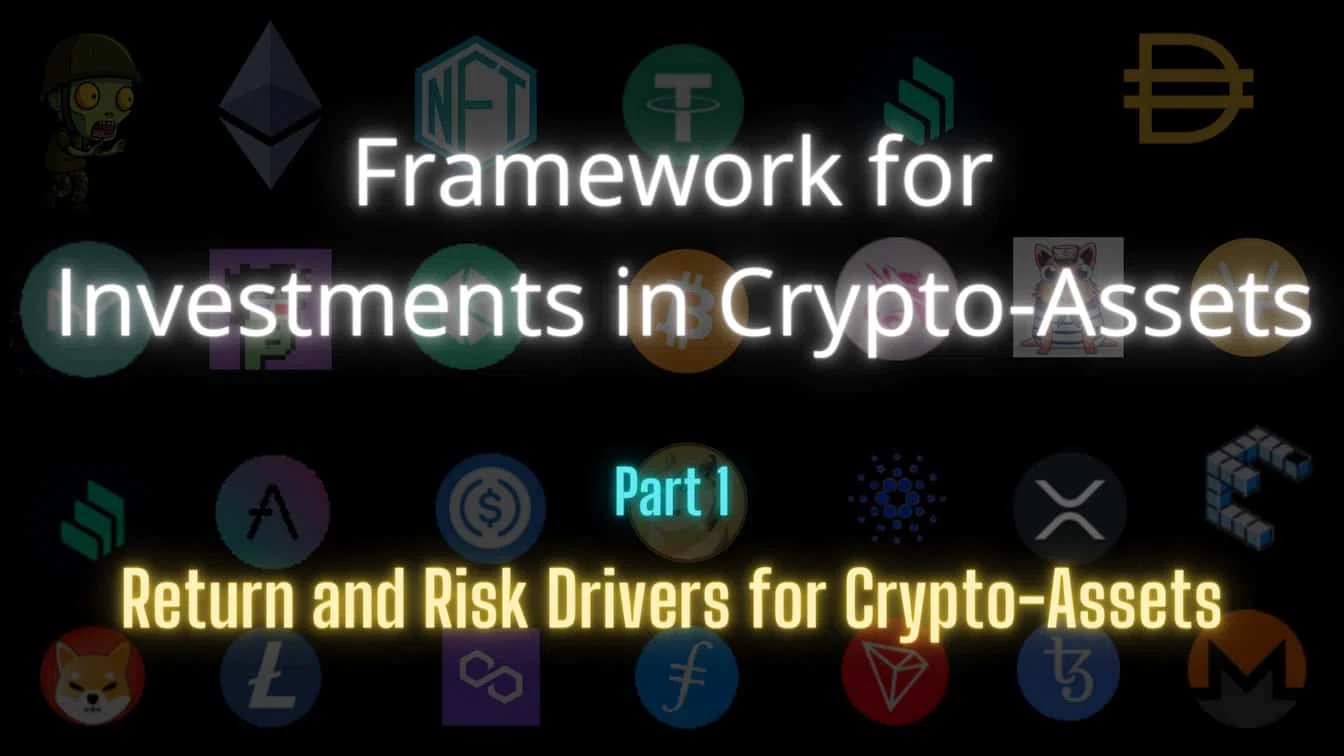Disclaimer: This article should not be construed as investment advice. The goal of the article is to help create an investment framework for crypto-assets and the author is not responsible for any losses arising out of investment in crypto or any other kind of investment.
Note: For the purpose of this article crypto-assets include cryptocurrencies, stablecoins, all kinds of crypto tokens, crypto derivative coins, and all crypto-related assets.
Rise of crypto-assets as a viable investment option
Before we talk about crypto-assets, let us talk about another asset that emerged as an asset class around half a century ago - Gold. In the US, Gold was illegal as an asset class till 1974 before President Gerald Ford signed legislation that permitted Americans to own gold bullions again.
The institutionalization of Gold as an investment class took some time. Although COMEX gold futures first began trading in 1974, as Morgan Stanley notes in their report, it took Gold 18 years to transition from a new asset to a recognized part of an institutional portfolio.
We are in a similar juncture with crypto-assets. The legal structure for crypto-assets is slowly taking shape and more and more people are entering the crypto ecosystem. As per a Chainanalysis report, crypto adoption among retail inventors grew by 881% in 2021. Adapting to this trend, many companies such as Evolve ETF and Mudrex launched group investment products. It seems that the crypto ecosystem is gaining maturity. Although we need to keep in mind that the market capitalization of all crypto-assets ($2.4 trillion USD as of 25th October 2021) is still very very small compared to the global equity markets ($122 trillion USD as of Q2 of 2021) and Global Bond Markets ($128 trillion USD as of August 2021).
There is a lot of headroom for growth for crypto-assets as an investment option.
Why do we need a portfolio strategy for Crypto-assets?
Despite all the growth and optimism in the crypto ecosystem, most crypto investments are primarily speculative. The speculative nature of crypto-assets is one of the reasons for the high volatility in crypto prices.
As the crypto ecosystem grows the need for a framework for crypto investments is becoming evident. Structured investment in crypto-assets will help increase the holding period and in turn curb the volatility in crypto-asset prices.
In this series of articles, I am trying to create an investment framework for crypto-assets. This is not a comprehensive guide for crypto investments and should not be construed as investment advice.
To create an investment strategy for crypto-assets we need to first understand the growth and risk drivers of the crypto-assets.
Growth Drivers
Currently, the primary growth drivers of crypto-assets are tied to demand and supply. The demand for crypto-assets is driven by network effects i.e. as more and more people enter the crypto ecosystem, more and more people accept crypto-assets as valid currencies or investments, and the value of the crypto-assets increase. Think like this - as more people start accepting cryptocurrencies as valid currencies, more merchants would be willing to accept them for the goods and services they are selling and vice versa. With increased acceptability, more and more people are likely to acquire crypto-assets boosting the price of the assets.
Some factors we need to consider to make a judgment about the growth prospects of a crypto-asset are regulatory acceptability, technological barriers to adoption, and transaction costs, etc.
To judge the growth prospects of utility tokens such as FUNToken and Basic Attention Tokens (BAT), we also need to track the demand for underlying utility - growth in demand for blockchain-based gaming in the case of FUNToken and usage growth of Brave Browser in the case of BAT.
Some crypto-asset growth can be tied to fiat currencies such as in the case of asset-backed stablecoins (USDT, QCash, etc) or real-world assets such as Gold or real estate.
Although, we need to be very careful about how much of the crypto-asset growth is really correlated with the growth of the underlying utility or asset and how much is simply with the overall optimism/pessimism about the crypto ecosystem (similar to the difference between alpha and beta is equities).
Another side of demand-driven growth is inflation due to increased supply. Inflation is driven by tokenonomics. Tokenomics guides how fast crypto coins or tokens are getting into supply and leaving supply i.e. getting burnt. Along with that, there can be an upper limit on total supply such as in the case of Bitcoin the maximum possible supply is 21 million.
Tokenonomics can be easier to track and calculate for some assets but can be very difficult in the case of some assets such as DeFi governance tokens.
While price growth i.e. capital gains is often visible and trackable for crypto-assets, crypto-assets can also generate returns in various other ways - say interest income from Yield Farming and royalty income from NFTs. Yield Farming means earning incentives by locking crypto-assets in DeFi platforms.
Understanding all the possible sources of return for a crypto-asset is important in making investment choices. Although the ability to take advantage of all the possible return opportunities depends on the skill and knowledge of the investor.
Risk Drivers
Many avoid crypto-assets because of the high volatility, but volatility is not the only source of risk for crypto-assets.
A major source of risk for crypto-assets over the long term is uncertainty over regulatory structure. As of now, the crypto ecosystem is fairly unregulated around the world. Regulatory interventions come as shocks to the ecosystem. For example, China’s repeated blows to crypto-asset trading latest in September 2021.
Another side of regulatory risk is the lack of regulations in the crypto ecosystem. Lack of regulation along with the decentralized nature of the blockchains means that it is often impossible to do due diligence on the token issuers especially in the DeFi and NFT ecosystem. This leads to frauds such as Rug Pull. Rug Pull is a type of scam where the developers abandon a project taking investors’ money. In early October 2021, Evolved Apes NFT creators vanished with $2.7 million of inventors’ money.
This leads to a major risk - ignorance. As Warren Buffett says
“Risk comes from not knowing what you are doing”
As per Coinmarketcap.com, there are more than 6,700 crypto-assets - using various different blockchains, different consensus mechanisms, different types of technologies, and offering different value propositions. The Crypto ecosystem is getting more and more complex with new cryptocurrencies, stablecoins, Decentralized Finance platforms, numerous types of tokens including NFTs, etc. Unfortunately, investment in these assets is often driven by hype and FOMO rather than thorough research. This also means that the investors dump the assets at the first sight of any adverse signal creating price risk for all investors.
Another issue is the lack of diversification. The crypto ecosystem is highly dominated by Bitcoin followed by Ethereum. Collectively they represent more than 60% of the market cap. At the same time, these two crypto-assets are highly correlated - we will talk about this later in this series. The point is that lack of diversification makes it difficult to mitigate the price risk created by high volatility.
Let us finish this section with technological risks. Blockchain is a fairly new technology. Bitcoin came into existence in 2008 and Ethereum in 2013. Technology is still evolving. For example, Ethereum is going to change the consensus mechanism and introduce shard chains with Ethereum 2.0. The point is that the technology is still obscure and often poses new kinds of threats to the ecosystem.
One such risk is smart contract risk. Smart Contracts or Distributed Contracts are self-executing programs that run on blockchains. As with any other program, smart contracts are vulnerable to faulty coding and cyber attacks. Smart contracts are the building blocks of token systems in the Decentralized Finance ecosystem and vulnerabilities in the smart contracts result in vulnerabilities in the tokens. According to CipherTrace, in 2020 alone more than $100 million worth of tokens were stolen from the DeFi sector.
Apart from smart contract risk, another major risk is private key management risk. Not completely technological risk but rather lack of understanding about the blockchain technology. Private keys are like passwords required to access blockchain ledgers and losing the private key means losing crypto-assets. Approximately 20% of all Bitcoins are lost due to lost private keys.
As the crypto ecosystem evolves we are likely to encounter various new kinds of threats, some we may not be able to envisage now.
Now, let us develop an investment framework for crypto-assets in the following articles.
Find the PART 2 here: https://www.fintechna.com/articles/framework-for-investments-in-crypto-assets-part-23/












